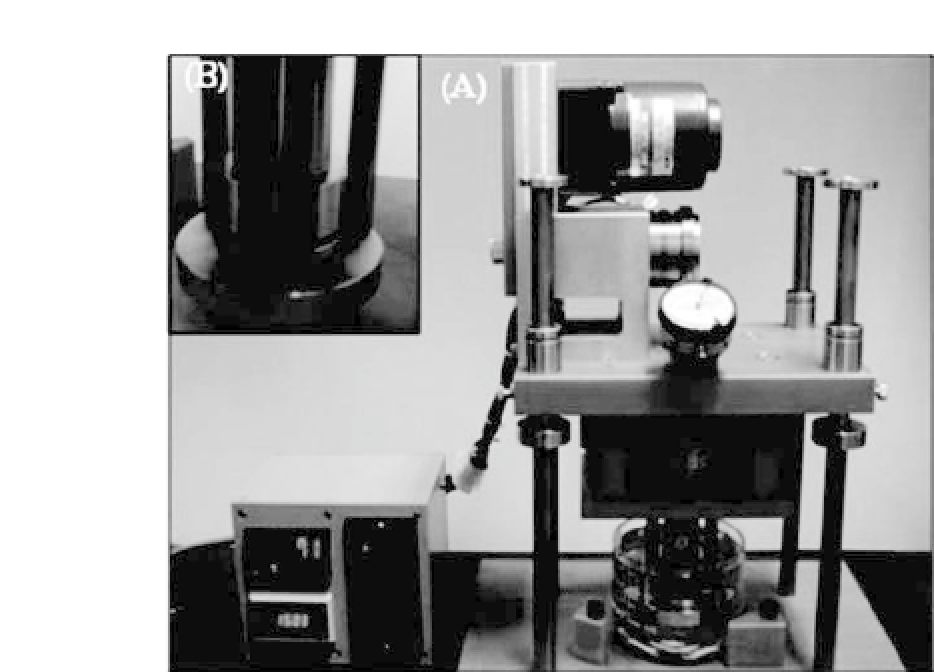Biomedical Engineering Reference
In-Depth Information
Figure 27.8.
A bioreactor in compressive mode (a) and the units of the
cradle of scaffolds and the plunger forcompressive forces (b).
stimulation. For effectively engineering the constructs, we used the
biodegradable PLCL scaffolds with complete rubberlike elasticity. It
is believed that the elasticity of the PLCL scaffolds might have con-
tributedtothetransferofthecompressiveforcestotheseededchon-
drocytes onto the scaffolds.
We compared the mechanical properties of elastic PLCL scaf-
folds with those of conventional rigid polymer scaffolds, such as
PLA and PLGA scaffolds.
60
The PLCL scaffolds possess a completely
rubberlike elasticity, are easily twisted and bent, and exhibit an
almost complete (over 97%) recovery from applied strain (up to
500%), while the control PLA scaffolds show little recovery after
strain. We evaluated their abilities to promote cartilaginous tissue
formation and cartilage regeneration
in vitro,
in nude mice, and
in a rabbit cartilage defect model. We seeded scaffolds with rabbit
chondrocytes,culturedthem
in vitro
,andsubcutaneouslyimplanted
them into nude mice for up to eight weeks.
In vitro
and
in vivo








Search WWH ::

Custom Search